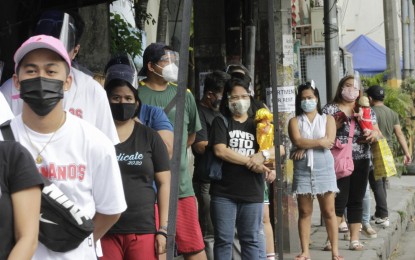
(File photo)
MANILA – The National Capital Region’s reproduction rate has increased to 1.08 in the recent week but the area remains under low risk classification for Covid-19, the OCTA Research Group said Monday.
Reproduction number is the number of individuals a Covid-19 case could infect.
NCR’s reproduction number in the previous week, from May 16 to 22, was 1.02.
“Ang ibig sabihin niyan ay may konting pagtaas na ang bilang ng kaso sa Metro Manila, may uptick tayo. Iyong seven-day average natin this week, from May 23 to 29, is 74. Mas mataas siya nang konti noong (That means there is a slight increase in Metro Manila cases, we have an uptick. Our seven-day average this week, from May 23 to 29, is 74. It is a bit higher than) May 16 to 22, 72 cases per day,” OCTA Research Group fellow Dr. Guido David said in a televised public briefing.
David noted that NCR’s positivity rate or the number of people who test positive for Covid-19 in a certain area, also went up to 1.4 percent from last week’s 1.2 percent.
“Pero alalahanin na basta iyong positivity rate ay less than 5 percent, nandoon siya sa approved ng WHO [World Health Organization], ibig sabihin ay low-risk pa rin tayo (As long as the positivity rate is less than 5 percent, within the approved by the WHO, it means we’re still at low risk),” David said.
The region’s healthcare utilization rate is still under low risk classification despite its increase to 23 percent from last week’s 22 percent.
David said it is difficult to identify the specific factors causing the uptick of cases in the NCR.
“Pero it’s possible na iyong mobility and iyong possibly waning immunity, and then iyong isang main factor diyan sa tingin natin ay iyong panibagong mga subvariants na na-detect na sa bansa natin -- iyong (But it could be the mobility and possibly the waning immunity, and the other main factor we see is the new subvariants in the country -- the) Omicron BA.4 and the Omicron BA.2.12.1,” he added. (PNA)
